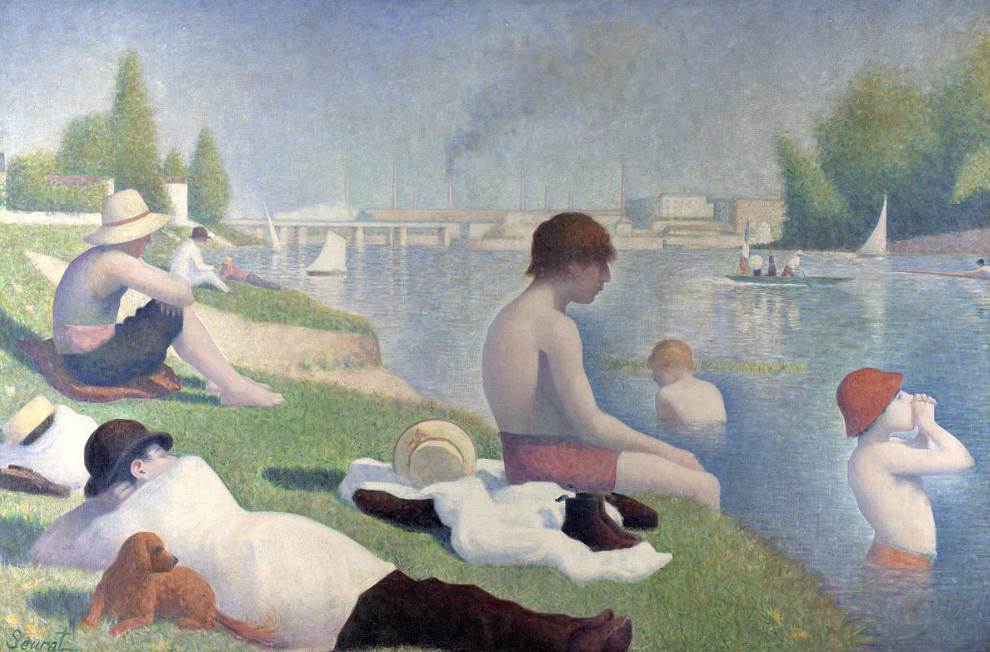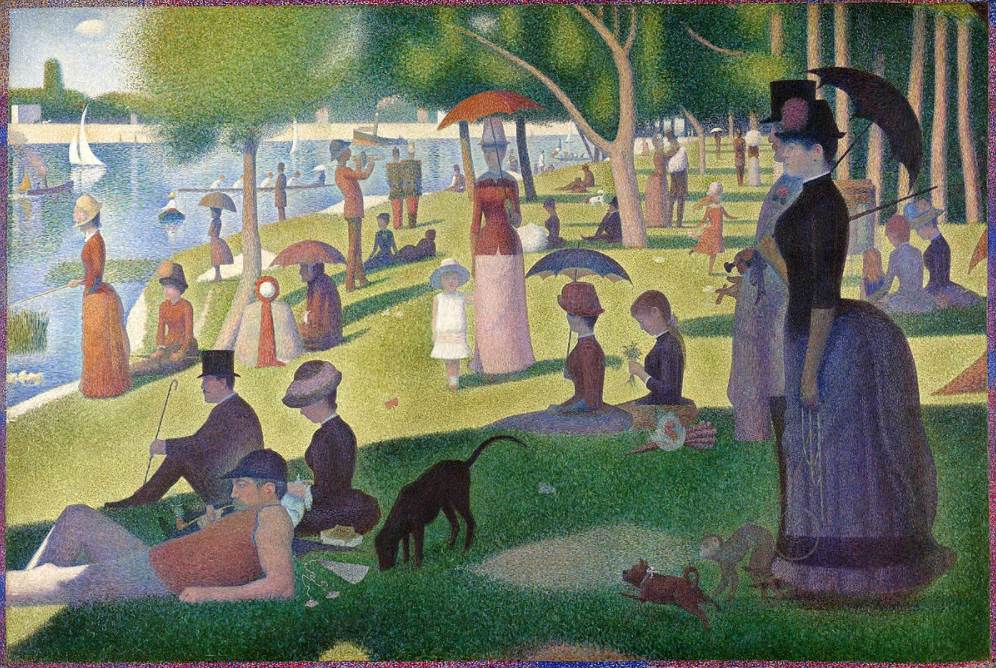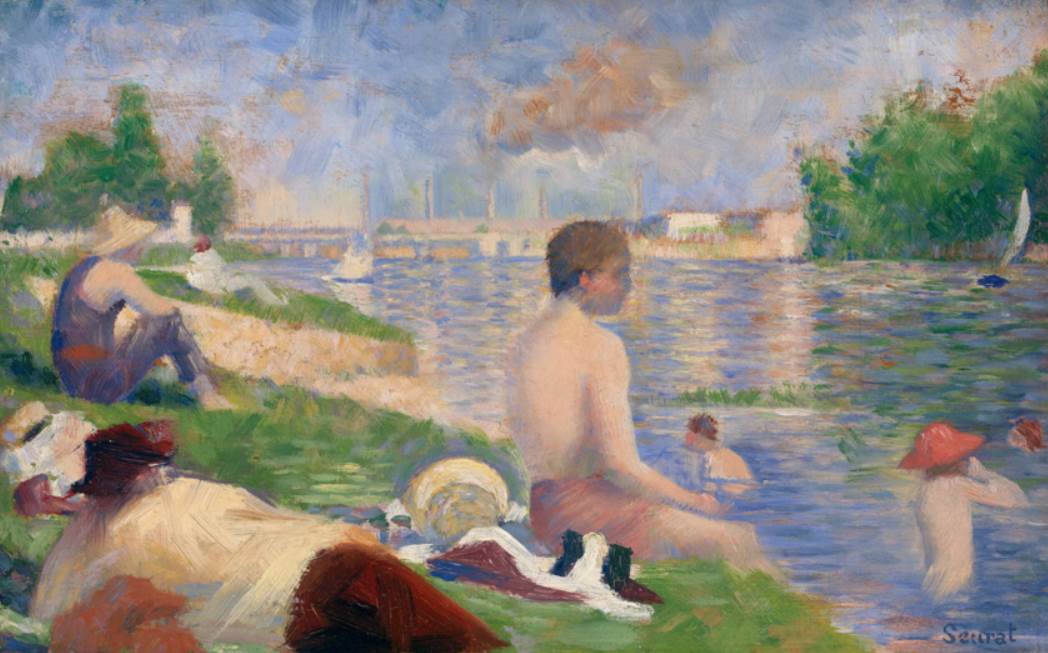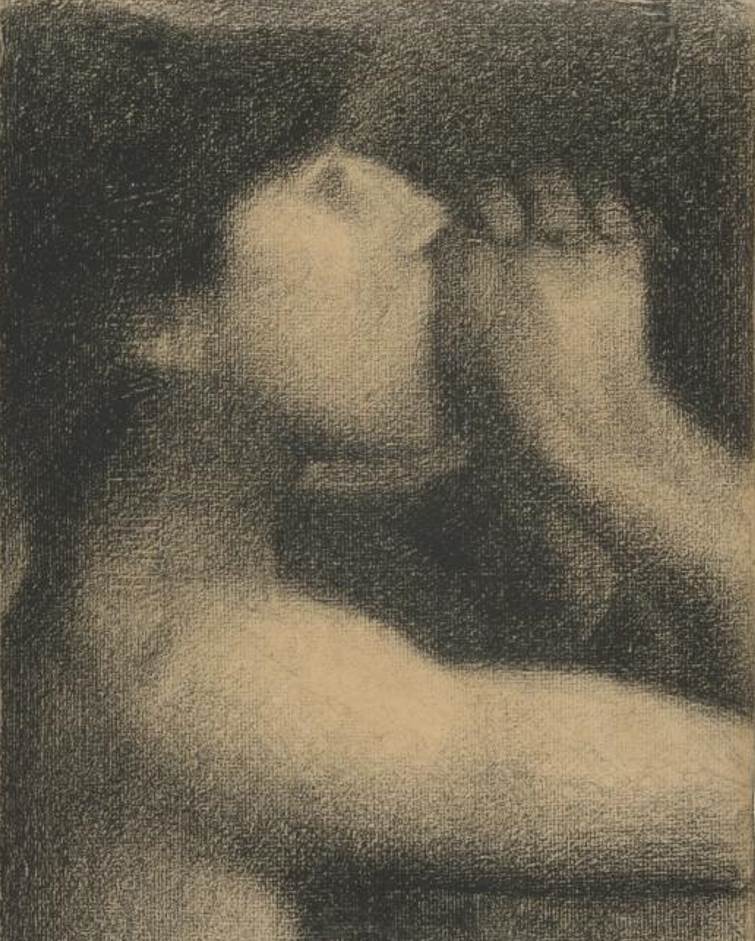When this French artist came back to Paris after a year-long service in the French military, he was dedicated to revolutionizing the world of art.
Georges Seurat (1859-1891) was from an upper-class family and received formal academic training at the École des Beaux-Arts in Paris in the late 1870s.
He didn’t embark on a journey to become the greatest academic painter in France but instead focused on developing a technique that is now referred to as Pointillism.
Let’s take a closer look at some of the most interesting facts about Bathers at Asnières by Georges Seurat, one of the artist’s intriguing masterpieces.
1. It was the first painting that Seurat completed following his military service
Georges Seurat was born and raised in Paris and picked up art as a child. He studied at the École Municipale de Sculpture et Dessin near the Boulevard Magenta where he lived.
He later received academic training under history painter Henri Lehmann (1814-1882) who was himself a former student of Neoclassical artist Jean-Auguste-Dominique Ingres (1780-1867).
During his time at the École des Beaux-Arts in 1878 and 1879, he mainly focused on copying artworks and sculptures.
He never completely abandoned what he learned here, something emphasized by the sculptural nature of the figures in this painting.
He left the prestigious art school in November 1879 for a year of military service at the Brest Military Academy and returned to Paris the following year.
He spent the next two years perfecting the Pointillist technique that he devised and completed Bathers at Asnières in 1884.

2. It depicts a scene near the Seine River in a fast-growing Parisian suburb
The Pointillist technique that Seurat perfected consists of applying small dots to produce larger fields. When viewed from a distance it results in patterns that make up the elements of the painting.
Seurat had a mathematical approach to this work which was quite unusual among the Impressionist artists who for the most part painted outdoors.
Although he is referred to as a Post-Impressionist artist, this distinctive new style is classified as Neo-Impressionism.
Surat’s masterpiece depicts a scene along the banks of the River Seine in Asnières. This is a suburb in the northwestern part of Paris that was rapidly developing at the time.
The city of Paris was expanding rapidly and had grown from 1 to 2 million inhabitants in just a few decades. This was reflected by the increased industrialization in its suburbs.

3. Seurat chose not to highlight the poor conditions of lower-class laborers
The bathers in this painting are lower-class people, something emphasized by the fact that we can see the smoke from factory towers emerging in the background.
What’s remarkable is that Seurat didn’t highlight this notion. Just about all people in the painting are seen in profile and there are no elements that indicate to which social class they belong.
Seurat did, however, magnificently capture the baking heat of the sun with the hazy view and shimmering reflection of the river’s water.
English art historian Roger Fry commented on this as follows:
No one could render this enveloping with a more exquisitely tremulous sensibility, a more penetrating observation or more unfailing consistency, than Seurat.

4. The artist’s second painting is an accompanying work depicting the upper class
Although the social status of the people in Bathers at Asnières remained unclear based on what we can see, it all made sense when Seurat completed his second masterpiece.
Shortly after he completed his first major work, he completed “A Sunday Afternoon on the Island of La Grande Jatte,” a painting he worked on between 1884 and 1886.
This accompanying painting depicts the opposite bank of the Seine, a place where the upper class hangs out. Both groups of people are basically staring at each other.
Both paintings have been interpreted as social statements in which Seurat highlighted the decay of the bourgeoisie. Prostitution was rampant and absurd behavior was common. Seurat highlighted this by including a woman with a monkey on a leash.
The figures in Asnières are cast in bright light while the people at La Grande Jatte are cast in shadows, a metaphor for the doom of the upper class if they don’t change their ways.

5. The artist completed 14 small oil paintings before he completed the painting
It takes a special kind of artist to invent a completely new style and spent multiple years of his life trying to perfect it.
Seurat did just that and this is reflected by the 14 preparatory oil studies that he made of this painting, the first dating back to as early as 1882.
He also produced a large number of conté crayon drawings, mainly focusing on the figures, which he then included in the main composition later on.
Georges Seurat completed the final study of Bathers at Asnières in 1883, a small oil-on-panel painting that has dimensions of 15.8 x 25.1 centimeters (6.2 x 9.8 inches).
This work is part of the collection of the Art Institute of Chicago, just like A Sunday Afternoon on the Island of La Grande Jatte, one of the museum’s most famous attractions.

6. The painting was rejected for the Paris Salon and received mixed reviews
When you spend about 4 years completing a painting in a new style that took several years to perfect, you probably have high hopes for it.
Unfortunately for Georges Seurat, his painting was rejected for the prestigious Paris Salon of 1884.
As a reaction to this rejection, he became the co-founder of the “Groupe des Artistes Indépendants” and they held their first Salon de Artistes Indépendants between May 15 and July 1, 1884.
This event took place at a building near the Place du Caroussel near the Louvre Museum and Bathers at Asnières was exhibited here.
While some critics certainly appreciated the effort that the artist had put into his work, the painting received rather mixed reviews.
It was exhibited at an exhibition in New York City titled “Works in Oil and Pastel by the Impressionists of Paris” in 1886.
Perhaps the best comment on the painting was made by French art critic Félix Fénéon (1861-1944), the man who coined the term “Neo-Impressionism.”
It reflects that Seurat’s style was misunderstood at the time, but gradually grew in importance after the artist’s death in 1891 at the young age of 31.
Though I did not commit myself to comment, I then [in 1884] completely realized the importance of this painting.

7. How big is Bathers at Ansières by Georges Seurat?
Just like his second masterpiece which depicts members of the upper class at La Grande Jatte, this painting is huge.
Bathers at Asnières by Georges Seurat is an oil on canvas painting that has dimensions of 201 × 301 centimeters (79 × 118 inches).

8. Where is the painting located today?
Seurat didn’t manage to sell his masterpiece during his lifetime and it remained in the possession of his family until the year 1900.
Art Critic Félix Fénéon was the man who bought it in 1900. Just a few decades later, Seurat’s importance was recognized worldwide, and the painting was acquired for the British national collections in 1924.
The painting initially hung in the Tate Gallery in London but was moved to the other popular museum in the city in 1961.
Today, the painting is still part of the collection of the National Gallery in London and one of the museum’s most enthralling attractions.



